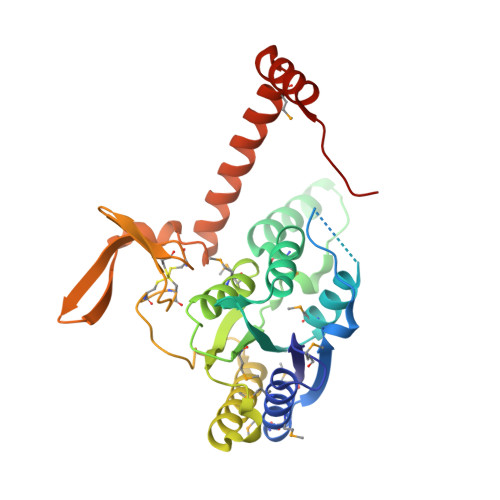Discovery of an ene-reductase for initiating flavone and flavonol catabolism in gut bacteria.
Yang, G., Hong, S., Yang, P., Sun, Y., Wang, Y., Zhang, P., Jiang, W., Gu, Y.(2021) Nat Commun 12: 790-790
- PubMed: 33542233
- DOI: https://doi.org/10.1038/s41467-021-20974-2
- Primary Citation of Related Structures:
7D38, 7D39, 7D3A, 7D3B - PubMed Abstract:
Gut microbial transformations of flavonoids, an enormous class of polyphenolic compounds abundant in plant-based diets, are closely associated with human health. However, the enzymes that initiate the gut microbial metabolism of flavones and flavonols, the two most abundant groups of flavonoids, as well as their underlying molecular mechanisms of action remain unclear. Here, we discovered a flavone reductase (FLR) from the gut bacterium, Flavonifractor plautii ATCC 49531 (originally assigned as Clostridium orbiscindens DSM 6740), which specifically catalyses the hydrogenation of the C2-C3 double bond of flavones/flavonols and initiates their metabolism as a key step. Crystal structure analysis revealed the molecular basis for the distinct catalytic property of FLR. Notably, FLR and its widespread homologues represent a class of ene-reductases that has not been previously identified. Genetic and biochemical analyses further indicated the importance of FLR in gut microbial consumption of dietary and medicinal flavonoids, providing broader insight into gut microbial xenobiotic transformations and possible guidance for personalized nutrition and medicine.
- CAS-Key Laboratory of Synthetic Biology, CAS Center for Excellence in Molecular Plant Sciences, Shanghai Institute of Plant Physiology and Ecology, Chinese Academy of Sciences, Shanghai, 200032, China.
Organizational Affiliation:



















